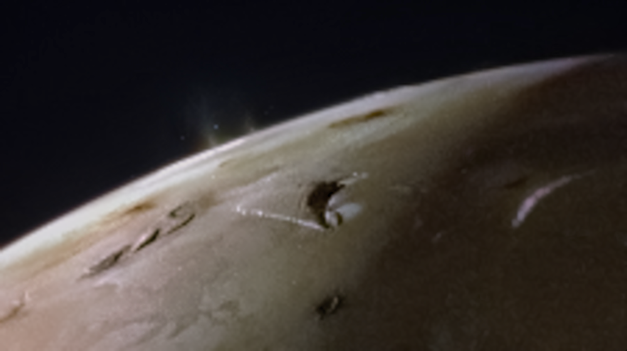NASA’s Juno spacecraft has completed yet another flyby of Io, Jupiter’s highly volcanic moon. Coming eerily close to the moon, the small spacecraft was able to capture images of twin volcanic plumes on Io’s surface, sending material erupting into space.
This new flyby was only the second-closest flyby that Juno made to Io. It came within 1,500 kilometers (930 miles) of the moon’s surface. During this stellar rendevous, the spacecraft captured evidence of the various volcanos believed to pockmark the surface of the Jovian moon.

Juno previously captured images of the hellish moon back in 2022, with more images following when the probe came within 920 miles of Io’s surface at the end of 2023. Now, the images of these twin volcanic plumes have enraptured scientists who are trying to understand the volcanic moon.
This more recent flyby also produced some stunning views of the chaotic terrain that covers Io, including several volcanoes, which can be seen in the images embedded in the tweets below. As the probe moves towards Io, you can see how the image shifts, showcasing the bright spots where volcanoes exist.
The team behind the Juno mission is still analyzing the data gathered during this last Io fly-by, but the Southwest Research Institute says that one of the images does in fact reveal the eruption of twin volcanic plumes. Exactly what volcano they might be tied to on the surface of the moon is unknown at this time.
Getting closer glimpses at the Jovian moons is one of the most important things that Juno gives us access to, as it will help us learn more about the various moons that orbit our solar system’s gas giant. And these moons are exceptionally unique in that each one offers a different experience for scientists to investigate.








